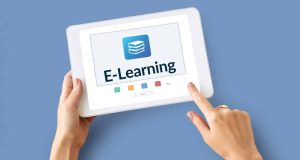Do you remember the frustration of trying to open a jar without a grip? Just as a well-designed lid opener makes the jar accessible to everyone, ensuring accessibility in your online learning app makes it usable for all. From students with visual impairments to those using assistive technologies, making your app inclusive is crucial. In this guide, you’ll learn how to understand accessibility in online learning, design for inclusivity, implement assistive technologies, and test for usability. By following these steps, you’ll create an app that provides equal learning opportunities for every user. Let’s make your online learning app a place where everyone can thrive.

Understanding Accessibility in Online Learning
To ensure the accessibility of your online learning app for all users, you must understand the principles of accessibility in online learning. Accessibility involves designing your app in a way that allows people with disabilities to perceive, understand, navigate, and interact with the content. This means considering factors such as visual, auditory, motor, and cognitive abilities. Providing alternative text for images, captions for videos, and ensuring keyboard navigation are just a few examples of how you can make your app more accessible. It’s crucial to adhere to web content accessibility guidelines and stay updated with the latest standards to ensure inclusivity. By understanding and implementing these principles, you can make your online learning app usable for a broader range of users, ultimately enhancing the learning experience for everyone.
Designing for Inclusivity
Ensure that your online learning app is designed with inclusivity in mind, considering the diverse needs of all potential users to create a truly accessible learning environment. Start by incorporating customizable features that allow users to adjust settings such as font size, color contrast, and audio options to meet their individual needs. Utilize clear and simple language in your interface and content to ensure that users with varying levels of literacy can easily understand the information presented. Additionally, provide alternative formats for content, such as transcripts for videos and audio descriptions for images, to accommodate users with visual or hearing impairments. By prioritizing inclusivity in your design, you can create an online learning app that is welcoming and usable for all individuals, regardless of their abilities or backgrounds.
Implementing Assistive Technologies
Implementing assistive technologies involves integrating features that enhance accessibility and accommodate diverse learning needs within your online learning app. Consider incorporating screen reader compatibility, alternative text for images, and keyboard navigation to assist users with visual or motor impairments. Providing adjustable font sizes, color contrast options, and customizable display settings can benefit individuals with low vision or color blindness. Additionally, offering transcripts and captions for audio and video content supports learners with hearing impairments. Interactive features like quizzes and activities should be operable through various input methods, including voice commands and switches, to cater to users with limited mobility. By implementing these assistive technologies, you can ensure that your online learning app is truly accessible to all users, regardless of their individual needs.
Testing and Iterating for Usability
You should conduct regular usability testing and iterate based on user feedback to ensure the effectiveness of your online learning app for all users. Usability testing allows you to observe how real users interact with your app and identify any potential barriers to accessibility. By gathering feedback from individuals with diverse abilities, you can pinpoint areas for improvement and make necessary adjustments. It’s crucial to iterate on your app’s design, functionality, and content based on the insights gained from usability testing. This iterative process enables you to continuously enhance the app’s usability and accessibility, ultimately creating a more inclusive learning experience for all users. Embracing user feedback and consistently refining your app’s usability will help you meet the needs of a diverse user base and ensure an accessible learning environment.
